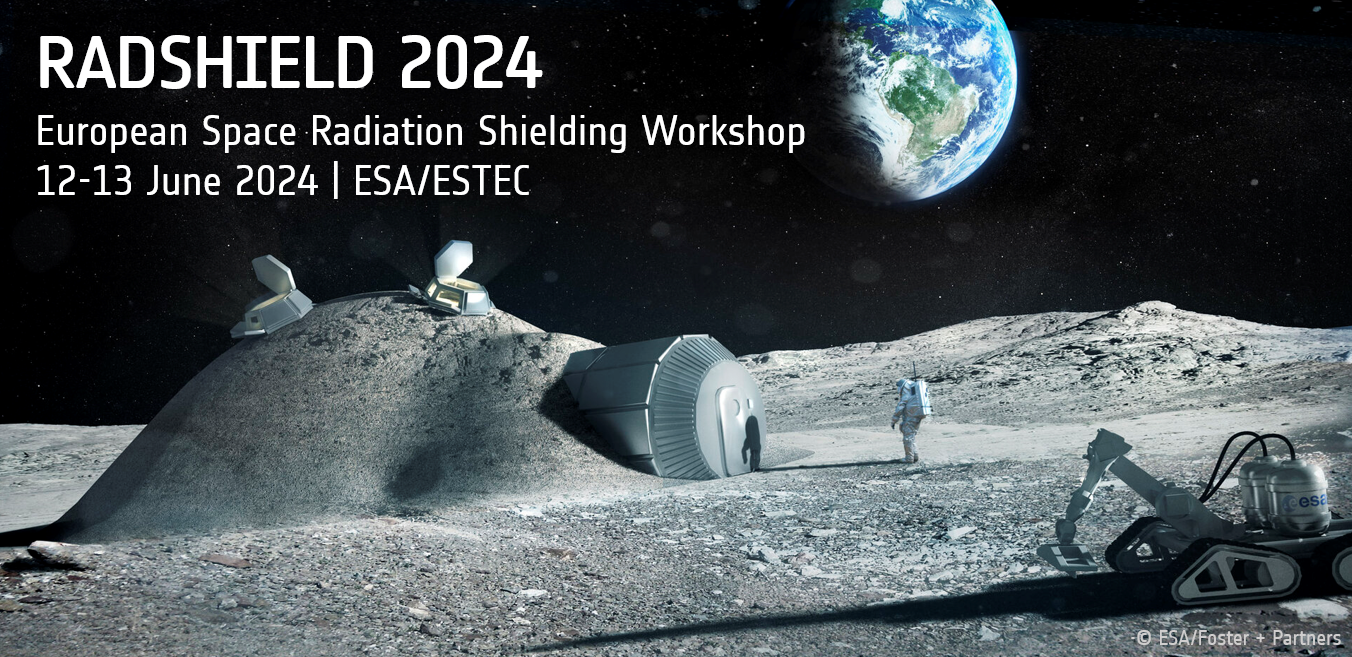Speaker
Description
Deep-space radiation is among the biggest hindrances to human space exploration. Therefore, radiation protection in space is a very active field of research. Despite its limitations, passive shielding is currently the most promising radiation protection strategy. It consists of adding shielding material to the walls of spacecrafts and planetary bases. Throughout the ESA-funded ROSSINI3 and DEIMOS projects, accelerator-based experimental campaigns were performed, respectively, at the GSI (Helmholtz Centre for Heavy-Ion Research) and HIT (Heidelberg Ion-Beam Therapy Centre) facilities with some of the most relevant ion beams for radiation protection in space. These beams included high and low-energy protons, He and Fe-ions. Targets included several structural (aluminium alloys), in situ (Moon regolith and concrete simulants), standard (high-density polyethylene), and innovative shielding materials (Li-based hydrides, pure and stabilised in a paraffin matrix). For long-duration exploration scenarios, heavy ions are the main contributors to the biological effects of cosmic radiation behind thin shields, while light ions are behind thick shields [1]. While the predominant effect with Fe-ions is dose attenuation due to projectile fragmentation [2], a strong inverse shielding effect (dose buildup) is observed for light ions [3].
The experimental data were compared with the simulation results of the most commonly used Monte Carlo codes in this field of research, namely FLUKA, PHITS, and Geant4. The simulations showed significant and systematic differences among the codes mainly due to the different nuclear cross-section models.
Therefore, two nuclear cross-section databases (total reaction [4] and fragment production [5] cross-sections) were generated. The collected nuclear reaction cross-section data were compared to the parametrisations used in the Monte Carlo codes. An optimisation of one of these parametrisations (the Tripathi-Cucinotta-Wilson) was proposed [6]. An important gap in the experimental data was also pointed out for high energies. The databases are available for open access online [7].
[1] Norbury, John W., et al. "Are further cross section measurements necessary for space radiation protection or ion therapy applications? Helium projectiles." Frontiers in Physics 8 (2020): 565954.
[2] Luoni, Francesca, et al. "Dose attenuation in innovative shielding materials for radiation protection in space: measurements and simulations." Radiation Research 198.2 (2022): 107-119.
[3] Luoni, Francesca, et al. "Dose Build-Up of High-Energy 1H and 4He Ions in Standard, Innovative, and In Situ Shielding Materials: Measurements and Simulations" in preparation for Communications Physics
[4] Luoni, F., et al. "Total nuclear reaction cross-section database for radiation protection in space and heavy-ion therapy applications." New Journal of Physics 23.10 (2021): 101201
[5] Luoni, Francesca. "Radiation Shielding during Deep-Space Missions: Dose Measurements, Monte Carlo Simulations, and Nuclear Cross-Sections." (2023).
[6] Luoni, F., et al. "Optimisation of the Tripathi model using a nuclear reaction cross-section database." New Journal of Physics 25.12 (2023): 123024.
[7] https://gsi.de/fragmentation

